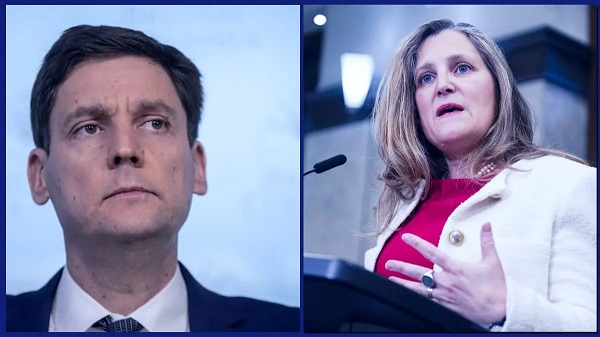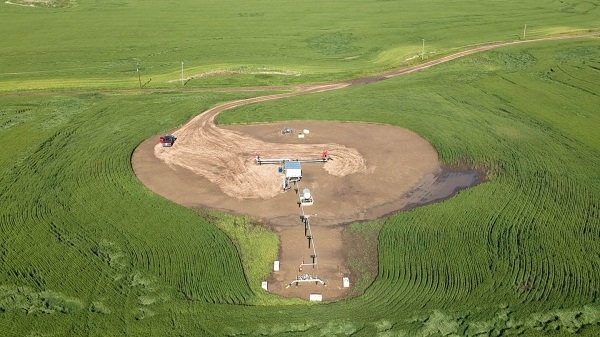Frontier Centre for Public Policy
Trudeau ‘finished what his father started’ driving Canada into failing freefall
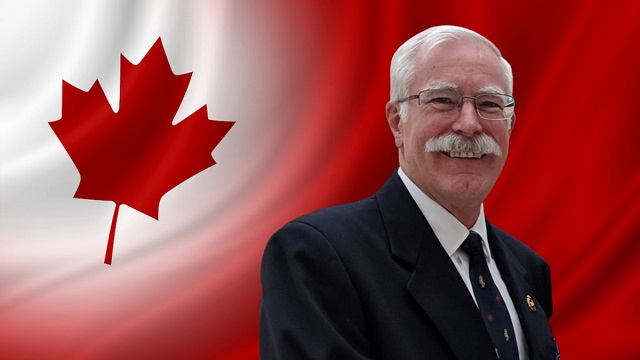
From the Frontier Centre for Public Policy
In 2015 Prime Minister Justin Trudeau scorned Canada — a country that afforded him so much, yet to which he had contributed nothing of notable significance. His disdain for those on whose backs Canada was built was clear. History and European national origins had to be blotted out.
Canada was a “post-national” nation with “no core identity,” he arrogantly told the New York Times. The reckless socialist ideology he spat out was an omen of the division, fear and attack on so-called privileged (white) Canadians that hit like a storm. It hovers over us like a choking toxic cloud.
If Trudeau’s vision was a Canada “completely splintered,” with Quebec a nation unto itself “separate and distinct,” English-speaking provinces “fractured into oblivion” and breaking up our “common culture” — then mission accomplished.
“He’s finished what his father started,” said Lt. Col. Dave Redman (ret’d), who served 27 years with the Canadian Armed Forces and headed Alberta’s Emergency Management Agency.
The Trudeau concept of a post-national state is “dangerous and misleading.”
“It implies that democratically elected national governments are no longer relevant.”
Redman explained Canada’s “shifting socio-political landscape” with powerful clarity in Canada 2024: A Confident Resilient Nation or a Fearful Fracture Country? in the Frontier Centre for Public Policy.
Canadians know something has gone terribly wrong beyond mounting financial struggles and trampled rights. Our nation’s rife with “apologies and internal divisions,” said Redman.
“Confidence has been turned into fear and shame. Canada has become irrelevant on the world stage.”
Canada’s in a “failing” freefall.
“Why will no one invest economically in Canada? Why are people leaving Canada? Why are people not believing that Canada has a future? Why are our allies ignoring us and holding us in disdain? Because we are a threat to their national security because China can get to them through us.”
Canada’s at a “critical juncture.” Until politicians and Canadians unite with common values and defended borders —necessary for a successful nation — Canada will be “stumbling from one crisis to another.”
Until Canadians hold them to account, politicians will fixate on minor “wedge” issues — such as diversity, equity and inclusion (DEI) — to divert attention from critical national concerns they want us to ignore.
Convincing people to feel bad about themselves makes it easier to manipulate guilt and usher in destructive, ideological programs with obscene price tags.
Canada must foster national pride, prioritize national interests and protect national security to secure its future, said Redman.
“A nation is successful when a group of people live in one country with defended borders and share common values, even if they vary in cultures and languages.”
Redman’s six-point framework for national interests includes unity, national security, good governance, protection of rights and freedoms, economic prosperity and growth and personal and community well-being. He offers strategies on how to achieve these critical objectives.
“I believe the current sitting government truly does believe that the World Economic Forum’s concepts and ideals of post-national states is what Canada should be and they have started it.”
“I believe the current government of Canada is intentionally walking each of those six national interests away from Canada in a way that will allow Canada to become part of a broken world.”
It’s up to Canadians to decide what direction we head in.
“The reason I wrote this paper was to make people think about our country in a 20-to-25-year vision. And not let the current government which loves to use divisive, tactical issues to destroy the larger picture conversation. And in doing so, destroy our economy, destroy our unity, destroy our national security by focussing on tactical issues,” said Redman.
A vision for Canada involves citizens who are optimistic about the future, have self-respect to follow through on their ideas, and courage to stand up for their culture and ideals, he said.
Trudeau and his band of self-serving renegades unleashed an ideological curse on Canada.
But we let them.
Then COVID-19 demonstrated how quickly rights and freedoms “can be trampled on, eviscerated and dismissed.”
For a glorious moment in time Freedom Convoy truckers rejuvenated Canadian pride, united Canadians and emboldened us to fight for freedom. Peaceful protesters who waved the Canadian flag were punished.
Yet the silence is deafening as people who despise Canada’s core identity — yes, Trudeau, we have one — hijack our nation and our children’s future.
Redman points to “diaspora marching routinely in the streets of our cities supporting illegal terrorist organizations demanding the death of both citizens here and abroad.”
They wave flags but never the Maple Leaf. They support other countries “but do not march for Canada.”
“Unity is the core value for a country. A cultural unity is based on common shared ethics, values and beliefs. People wishing to become citizens of a country must understand these principles of belief and join the country because they wish for the same to be the foundation of their daily lives.”
“Many who come to a country, not wishing to join the cultural unity of that country, are enemies, intentional or otherwise, who work to erode or destroy this unity.”
Immigration is part of national security.
“You’re pouring people into our country who do not share our ethics and values. And you’re doing it intentionally. That will destroy unity and while it’s destroying unity it will destroy economic prosperity and growth.”
“Our police and courts take no action or in fact support these illegal acts.”
“Our current federal government, many of our provincial territorial governments and our municipal governments stand silently by, or in some cases support the destruction of our values, laws and national interests.”
Redman said the question is, what do Canadians want Canada to be? Will we stand up and root out infectious ideology? Is it too late?
“My paper is about how to overcome what’s happened. It’s happened, we can’t change that. But it’s how to get politicians and Canadians to change how they think about our country. And to have a process to put in place, a vision for our country and have elected officials explain what they see the vision to be. Canadians can make a choice between visions.”
Citizens, academia, public and private sector organizations, unions, religious and non-religious groups need to get involved to break down national interests into “clear and attainable objectives.”
Politicians must explain what unity and democracy means to them. That’s not happening.
Many Canadians are pinning hopes on Conservative Leader Pierre Poilievre forming the next federal government.
“My line to Poilievre is I understand his tactical four bullet plan you know that inflation’s up, the cost of living’s up, that housing’s bad and people need more money in their pocket.”
“I get it. He’s beating that drum over and over. But we’ve got a year before the election, he needs to start talking about his vision for Canada.”
Canada was once internationally respected, trusted and consulted. Now we are pitied by shocked outsiders witnessing woke ideology and crushed free speech forced upon us.
“We’ve been taught to be ashamed of our history instead of proud of it, or even to learn from it.”
“We have completely shattered democratic institutions. Our election system is in question. Our legislatures are in turmoil, our courts, our schools, our medical system. The mainstream media is completely partisan. Our economy is broken. People can’t meet bills at the end of the month and we’re ignored and shunned by our allies.”
Redman addressed good governance, offering guidelines on how to “strengthen and preserve the democratic way of life in Canada.”
“Good governance to me means defence of democracy, where in other countries it can mean absolute control of a totalitarian government.”
Redman’s suggestions to stop Canada from being completely “shattered” include a 100% immigration policy review; halting funding to universities that are “domestic threats” and removing Marxists professors; establishing a monitored election process; and ending government-funded media.
Agencies that counter external threats must be “equipped to work individually and cooperatively, with each other and our allies.”
Stop foreign aid that counters our interests and national security.
“While Canadians are challenged to put food on the table and to have a house, they watch as the federal government sends hundreds of millions of dollars to international organizations and specific countries that do not share our democratic aims or our national interests.”
There must be “a wall of people hitting” politicians telling them to listen or face defeat.
“In 25 years will Canada be a democracy? Or will it become a country led by an authoritarian government that uses fear and threats to remove imaginary risks from the daily lives of Canadians who have lost their self-respect and courage?”
Look at what eight years did.
First published here.
Linda Slobodian is the Senior Manitoba Columnist for the Western Standard based out of Winnipeg. She has been an investigative columnist for the Calgary Herald, Calgary Sun, Edmonton Sun, and Alberta Report.
armed forces
Canada’s Military Can’t Be Fixed With Cash Alone
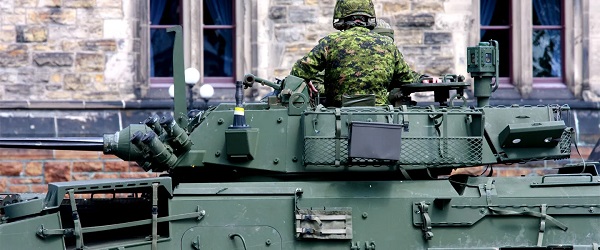
From the Frontier Centre for Public Policy
By Lt. Gen. (Ret.) Michel Maisonneuve
Canada’s military is broken, and unless Ottawa backs its spending with real reform, we’re just playing politics with national security
Prime Minister Mark Carney’s surprise pledge to meet NATO’s defence spending target is long overdue, but without real reform, leadership and a shift away from bureaucracy and social experimentation, it risks falling short of what the moment demands.
Canada committed in 2014 to spend two per cent of its gross national product on defence—a NATO target meant to ensure collective security and more equitable burden-sharing. We never made it past 1.37 per cent, drawing criticism from allies and, in my view, breaching our obligation. Now, the prime minister says we’ll hit the target by the end of fiscal year 2025-26. That’s welcome news, but it comes with serious challenges.
Reaching the two per cent was always possible. It just required political courage. The announced $9 billion in new defence spending shows intent, and Carney’s remarks about protecting Canadians are encouraging. But the reality is our military readiness is at a breaking point. With global instability rising—including conflicts in Ukraine and the Middle East—Canada’s ability to defend its territory or contribute meaningfully to NATO is under scrutiny. Less than half of our army vehicles, ships and aircraft are currently operational.
I’m told the Treasury Board has already approved the new funds, making this more than just political spin. Much of the money appears to be going where it’s most needed: personnel. Pay and benefit increases for serving members should help with retention, and bonuses for re-enlistment are reportedly being considered. Recruiting and civilian staffing will also get a boost, though I question adding more to an already bloated public service. Reserves and cadet programs weren’t mentioned but they also need attention.
Equipment upgrades are just as urgent. A new procurement agency is planned, overseen by a secretary of state—hopefully with members in uniform involved. In the meantime, accelerating existing projects is a good way to ensure the money flows quickly. Restocking ammunition is a priority. Buying Canadian and diversifying suppliers makes sense. The Business Council of Canada has signalled its support for a national defence industrial strategy. That’s encouraging, but none of it will matter without follow-through.
Infrastructure is also in dire shape. Bases, housing, training facilities and armouries are in disrepair. Rebuilding these will not only help operations but also improve recruitment and retention. So will improved training, including more sea days, flying hours and field operations.
All of this looks promising on paper, but if the Department of National Defence can’t spend funds effectively, it won’t matter. Around $1 billion a year typically lapses due to missing project staff and excessive bureaucracy. As one colleague warned, “implementation [of the program] … must occur as a whole-of-government activity, with trust-based partnerships across industry and academe, or else it will fail.”
The defence budget also remains discretionary. Unlike health transfers or old age security, which are legally entrenched, defence funding can be cut at will. That creates instability for military suppliers and risks turning long-term procurement into a political football. The new funds must be protected from short-term fiscal pressure and partisan meddling.
One more concern: culture. If Canada is serious about rebuilding its military, we must move past performative diversity policies and return to a warrior ethos. That means recruiting the best men and women based on merit, instilling discipline and honour, and giving them the tools to fight and, if necessary, make the ultimate sacrifice. The military must reflect Canadian values, but it is not a place for social experimentation or reduced standards.
Finally, the announcement came without a federal budget or fiscal roadmap. Canada’s deficits continue to grow. Taxpayers deserve transparency. What trade-offs will be required to fund this? If this plan is just a last-minute attempt to appease U.S. President Donald Trump ahead of the G7 or our NATO allies at next month’s summit, it won’t stand the test of time.
Canada has the resources, talent and standing to be a serious middle power. But only action—not announcements—will prove whether we truly intend to be one.
The NATO summit is over, and Canada was barely at the table. With global threats rising, Lt. Gen. (Ret.) Michel Maisonneuve joins David Leis to ask: How do we rebuild our national defence—and why does it matter to every Canadian? Because this isn’t just about security. It’s about our economy, our identity, and whether Canada remains sovereign—or becomes the 51st state.
Michel Maisonneuve is a retired lieutenant-general who served 45 years in uniform. He is a senior fellow at the Frontier Centre for Public Policy and author of In Defence of Canada: Reflections of a Patriot (2024).
Bjorn Lomborg
The Physics Behind The Spanish Blackout
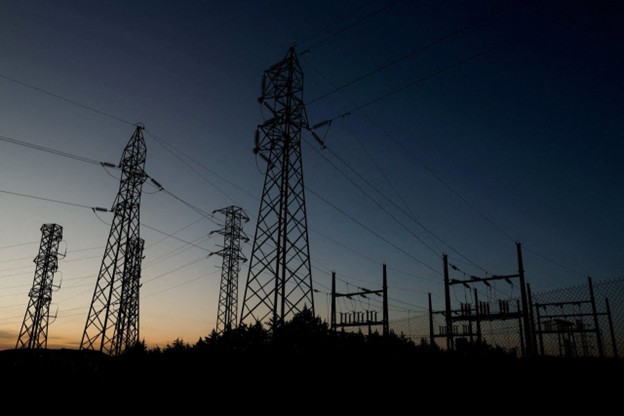
From the Frontier Centre for Public Policy
Madrid knew solar and wind power were unreliable but pressed ahead anyway
When a grid failure plunged 55 million people in Spain and Portugal into darkness at the end of April, it should have been a wake-up call on green energy. Climate activists promised that solar and wind power were the future of cheap, dependable electricity. The massive half-day blackout shows otherwise. The nature of solar and wind generation makes grids that rely on them more prone to collapse—an issue that’s particularly expensive to ameliorate.
As I wrote in these pages in January, the data have long shown that environmentalists’ vision of cheap, reliable solar and wind energy was a mirage. The International Energy Agency’s latest cost data continue to underscore this: Consumers and businesses in countries with almost no solar and wind on average paid 11 U.S. cents for a kilowatt hour of electricity in 2023, but costs rise by more than 4 cents for every 10% increase in the portion of a nation’s power generation that’s covered by solar and wind. Green countries such as Germany pay 34 cents, more than 2.5 times the average U.S. rate and nearly four times China’s.
Prices are high in no small part because solar and wind require a duplicate backup energy system, often fossil-fuel driven, for when the sun doesn’t shine or the wind doesn’t blow. The Iberian blackout shows that the reliability issues and costs of solar and wind are worse than even this sort of data indicates.
Grids need to stay on a very stable frequency—generally 50 Hertz in Europe—or else you get blackouts. Fossil-fuel, hydro and nuclear generation all solve this problem naturally because they generate energy by powering massive spinning turbines. The inertia of these heavy rotating masses resists changes in speed and hence frequency, so that when sudden demand swings would otherwise drop or hike grid frequency, the turbines work as immense buffers. But wind and solar don’t power such heavy turbines to generate energy. It’s possible to make up for this with cutting-edge technology such as advanced inverters or synthetic inertia. But many solar and wind farms haven’t undergone these expensive upgrades. If a grid dominated by those two power sources gets off frequency, a blackout is more likely than in a system that relies on other energy sources.
Spain has been forcing its grid to rely more on unstable renewables. The country has pursued an aggressive green policy, including a commitment it adopted in 2021 to achieve “net zero” emissions by 2050. The share of solar and wind as a source of Spain’s electricity production went from less than 23% in 2015 to more than 43% last year. The government wants its total share of renewables to hit 81% in the next five years—even as it’s phasing out nuclear generation.
Just a week prior to the blackout, Spain bragged that for the first time, renewables delivered 100% of its electricity, though only for a period of minutes around 11:15 a.m. When it collapsed, the Iberian grid was powered by 74% renewable energy, with 55% coming from solar. It went down under the bright noon sun. When the Iberian grid frequency started faltering on April 28, the grid’s high proportion of solar and wind generation couldn’t stabilize it. This isn’t speculation; it’s physics. As the electricity supply across Spain collapsed, Portugal was pulled along, because the two countries are tightly interconnected through the Iberian electricity network.
Madrid had been warned. The parent company of Spain’s grid operator admitted in February: “The high penetration of renewable generation without the necessary technical capabilities in place to keep them operating properly in the event of a disturbance . . . can cause power generation outages, which could be severe.”
Yet the Spanish government is still in denial. Even while admitting that he didn’t know the April blackout’s cause, Prime Minister Pedro Sánchez insisted that there was “no empirical evidence” that renewables were to blame and that Spain is “not going to deviate a single millimeter” from its green energy ambitions.
Unless the country—and its neighbors—are comfortable with an increased risk of blackouts, this will require expensive upgrades. A new Reuters report written with an eye to the Iberian blackout finds that for Europe as a whole this would cost trillions of dollars in infrastructure updates. It’s possible that European politicians can talk voters into eating that cost. It’ll be impossible for India or nations in Africa to follow suit.
That may be unwelcome news to Mr. Sánchez, but even a prime minister can’t overcome physics. Spain’s commitment to solar and wind is forcing the country onto an unreliable, costly, more black-out-prone system. A common-sense approach would hold off on a sprint for carbon reductions and instead put money toward research into actually reliable, affordable green energy.
Unfortunately for Spain and those countries unlucky enough to be nearby, the Spanish energy system—as one Spanish politician put it—“is being managed with an enormous ideological bias.”
Bjorn Lomborg is president of the Copenhagen Consensus, a visiting fellow at Stanford University’s Hoover Institution and author of “Best Things First.”
-

 Alberta11 hours ago
Alberta11 hours agoAlberta Independence Seekers Take First Step: Citizen Initiative Application Approved, Notice of Initiative Petition Issued
-

 Crime10 hours ago
Crime10 hours agoNational Health Care Fraud Takedown Results in 324 Defendants Charged in Connection with Over $14.6 Billion in Alleged Fraud
-

 Health9 hours ago
Health9 hours agoRFK Jr. Unloads Disturbing Vaccine Secrets on Tucker—And Surprises Everyone on Trump
-
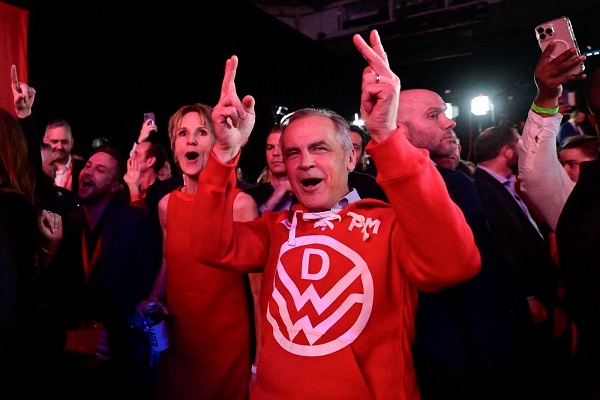
 Bruce Dowbiggin12 hours ago
Bruce Dowbiggin12 hours agoThe Game That Let Canadians Forgive The Liberals — Again
-
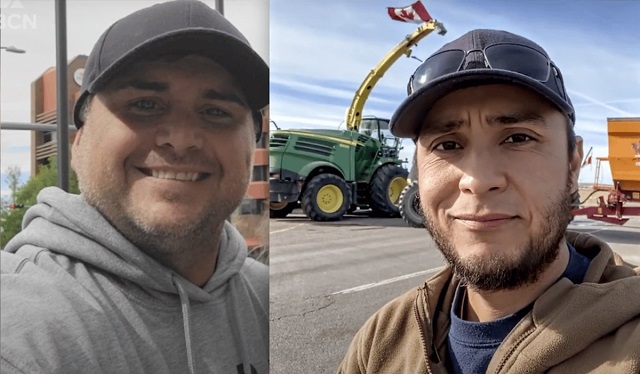
 Alberta1 day ago
Alberta1 day agoCOVID mandates protester in Canada released on bail after over 2 years in jail
-
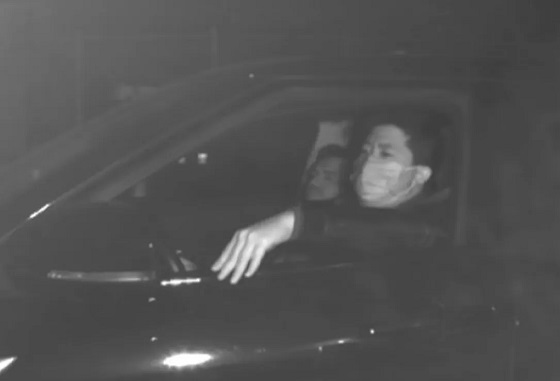
 Crime2 days ago
Crime2 days agoProject Sleeping Giant: Inside the Chinese Mercantile Machine Linking Beijing’s Underground Banks and the Sinaloa Cartel
-

 Business1 day ago
Business1 day agoCanada’s loyalty to globalism is bleeding our economy dry
-

 Alberta2 days ago
Alberta2 days agoAlberta uncorks new rules for liquor and cannabis




